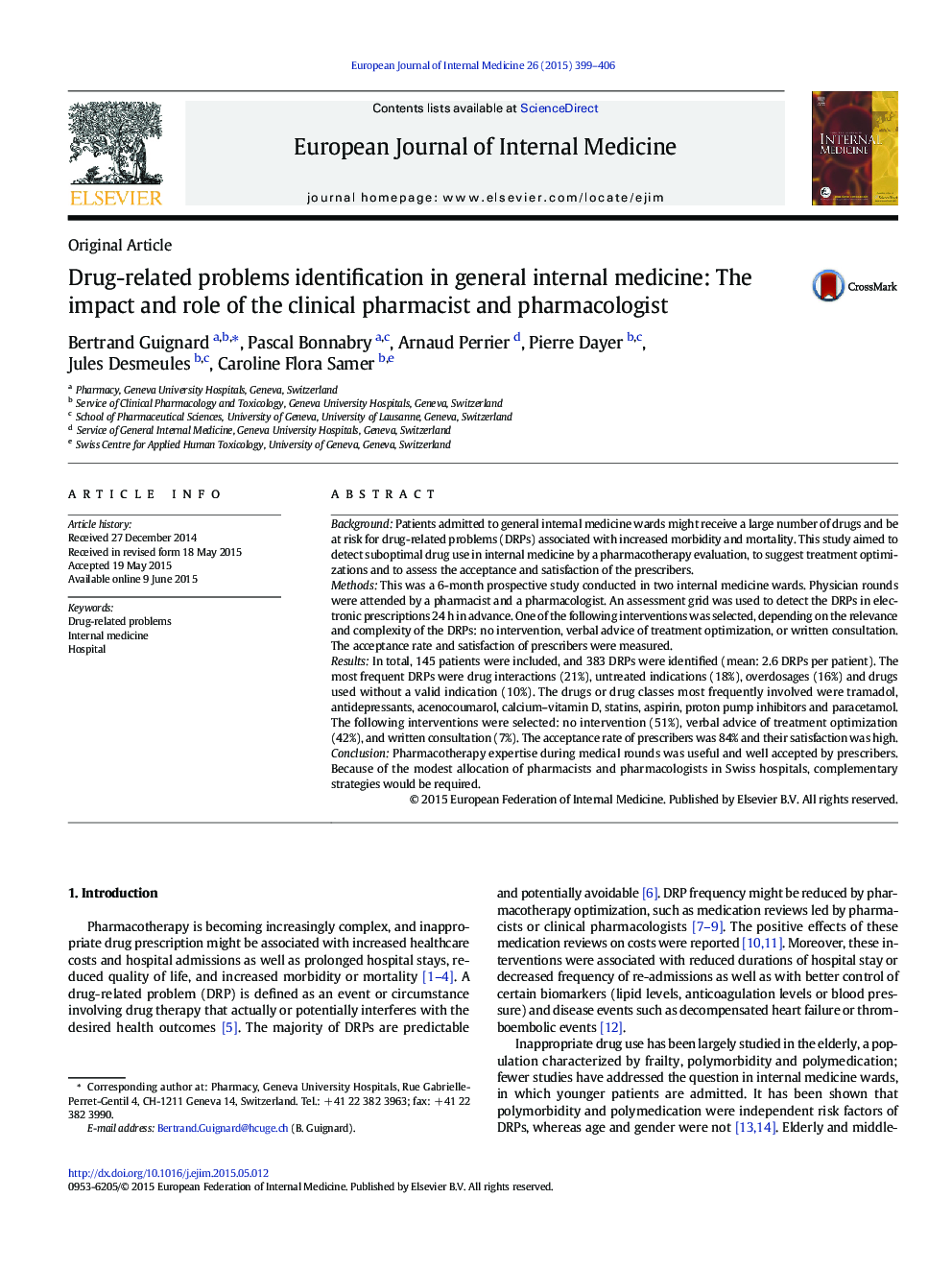| Article ID | Journal | Published Year | Pages | File Type |
|---|---|---|---|---|
| 3466202 | European Journal of Internal Medicine | 2015 | 8 Pages |
•A 6-month interventional prospective study was conducted in internal medicine.•We detected suboptimal drug use and suggested treatment optimizations.•We were present during medical rounds and intervened directly during prescription.•Most frequent problems were interactions, underuse, overdosage and overuse.•Tramadol, statins, aspirin, proton pump inhibitors and paracetamol were involved.
BackgroundPatients admitted to general internal medicine wards might receive a large number of drugs and be at risk for drug-related problems (DRPs) associated with increased morbidity and mortality. This study aimed to detect suboptimal drug use in internal medicine by a pharmacotherapy evaluation, to suggest treatment optimizations and to assess the acceptance and satisfaction of the prescribers.MethodsThis was a 6-month prospective study conducted in two internal medicine wards. Physician rounds were attended by a pharmacist and a pharmacologist. An assessment grid was used to detect the DRPs in electronic prescriptions 24 h in advance. One of the following interventions was selected, depending on the relevance and complexity of the DRPs: no intervention, verbal advice of treatment optimization, or written consultation. The acceptance rate and satisfaction of prescribers were measured.ResultsIn total, 145 patients were included, and 383 DRPs were identified (mean: 2.6 DRPs per patient). The most frequent DRPs were drug interactions (21%), untreated indications (18%), overdosages (16%) and drugs used without a valid indication (10%). The drugs or drug classes most frequently involved were tramadol, antidepressants, acenocoumarol, calcium–vitamin D, statins, aspirin, proton pump inhibitors and paracetamol. The following interventions were selected: no intervention (51%), verbal advice of treatment optimization (42%), and written consultation (7%). The acceptance rate of prescribers was 84% and their satisfaction was high.ConclusionPharmacotherapy expertise during medical rounds was useful and well accepted by prescribers. Because of the modest allocation of pharmacists and pharmacologists in Swiss hospitals, complementary strategies would be required.
